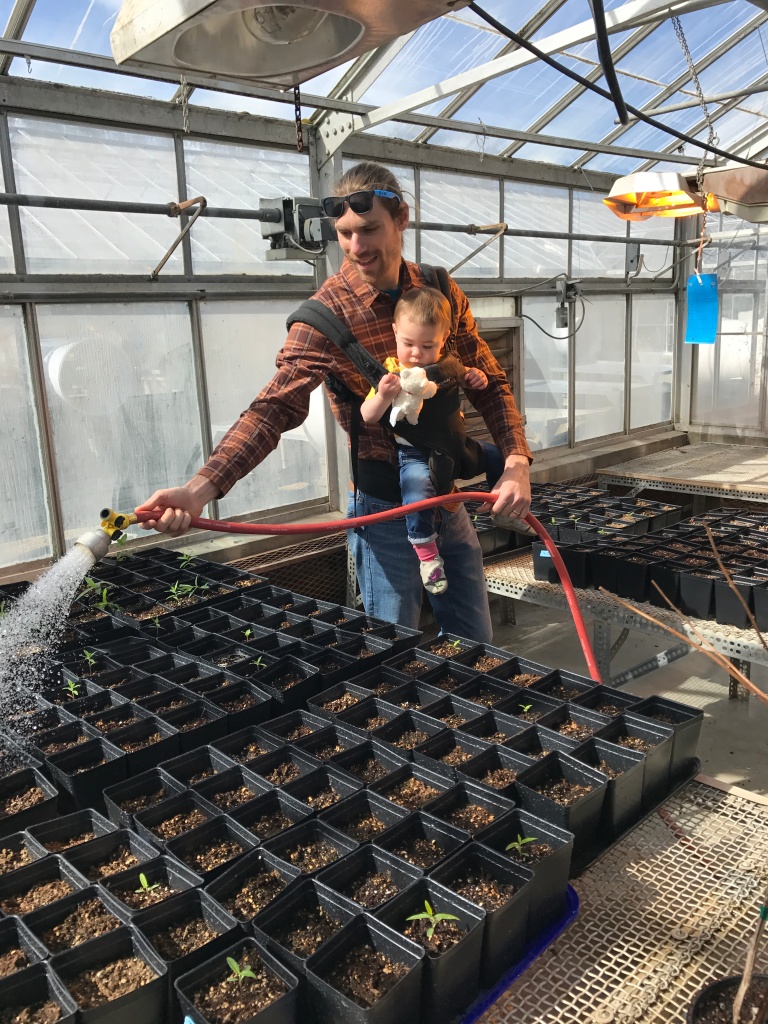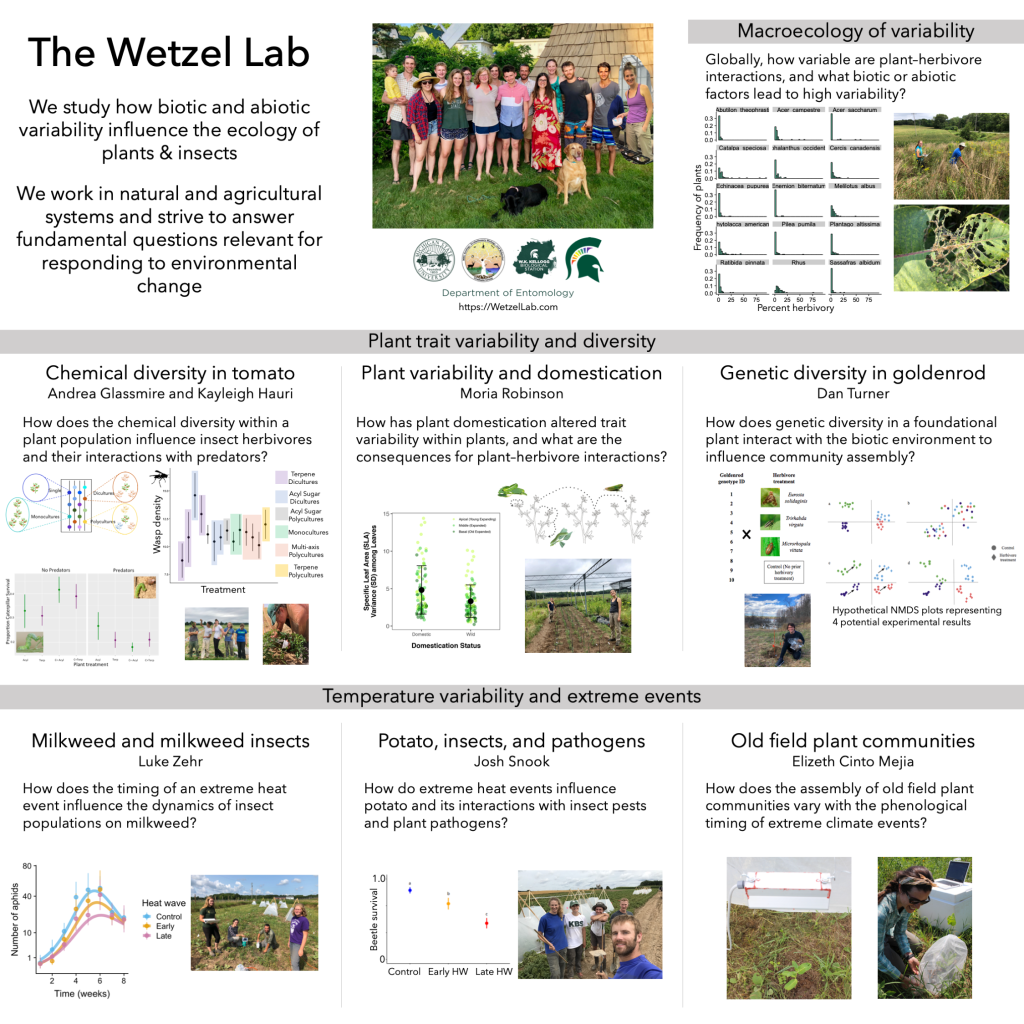Every organism grows and reproduces best under specific biological and environmental conditions. Yet a quick look outside reveals a world that is astoundingly variable, both in biological diversity and environmental heterogeneity. Organisms face massive fluctuations in temperature, food quality, predation risk, and other key factors, and they only rarely experience their optimal conditions. The Wetzel Lab studies how biological diversity and environmental variability influence insect herbivores and their interactions with plants and predators. We strive to link patterns at population and community scales with mechanisms at the organismal scale. We do this by using mathematical and statistical modeling to integrate field and lab data, including plant chemistry, insect physiology and behavior, and population and community ecology. The lab also places an emphasis on using meta-analysis, synthesis, and global collaboration to search for general answers to fundamental ecological questions.
We work in both natural and agricultural ecosystems and tackle fundamental biological questions that have implications for environmental problems, particularly agricultural sustainability and responses to climate change. Our research in agricultural systems has suggested new ways to enhance agricultural sustainability and reduce reliance on pesticides. Our research in natural systems examines how climate change is influencing population dynamics and predator-prey interactions.
Have a look at our lab poster for a graphical summary of many of our projects.
1. How does plant chemical diversity influence the ecology and evolution of plant–insect interactions?
Herbivores in natural ecosystems have to cope with astounding diversity and variability in plant defenses and nutrients. Herbivores in agricultural ecosystems, in contrast, experience plant populations that are unnaturally homogeneous. Recent genetic studies indicate that plant genetic diversity has a profound and often negative influence on herbivore density. This work has contributed to calls for using plant diversity to manage agricultural pests as well as increasing attention to within-species genetic variation in natural systems. But the specific plant traits and the biological mechanisms underlying the effects of plant genetic diversity on insects, however, are poorly understood because the literature on plant-herbivore interactions focuses mostly on plant traits means. The Wetzel Lab is using lab, greenhouse, and field experiments, as well as meta-analysis, to understand how plant trait diversity influence insect herbivore population dynamics and predator-prey interactions. We are linking patterns of population dynamics to diversity and variability in specific plant traits, representing a major advance in our understanding of the links between plant functional traits and insect ecology. (Wetzel et al. 2016, Wetzel & Thaler 2016, Wetzel and Thaler 2018, Wetzel et al. 2018, Wetzel and Whitehead 2019)
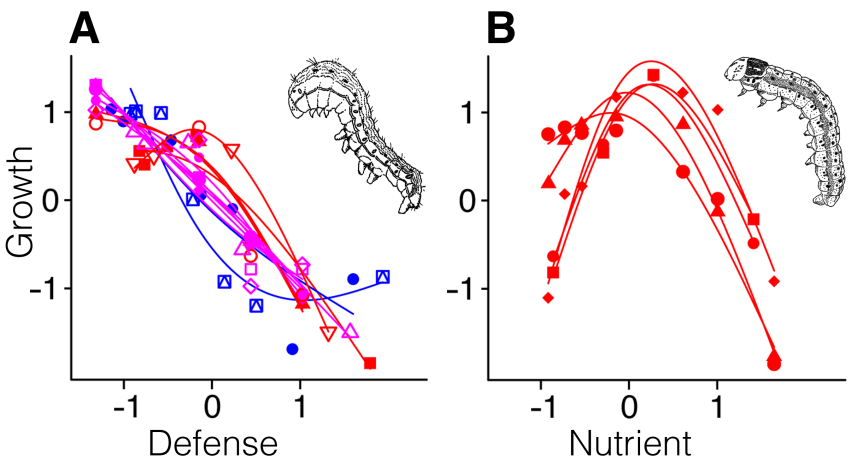
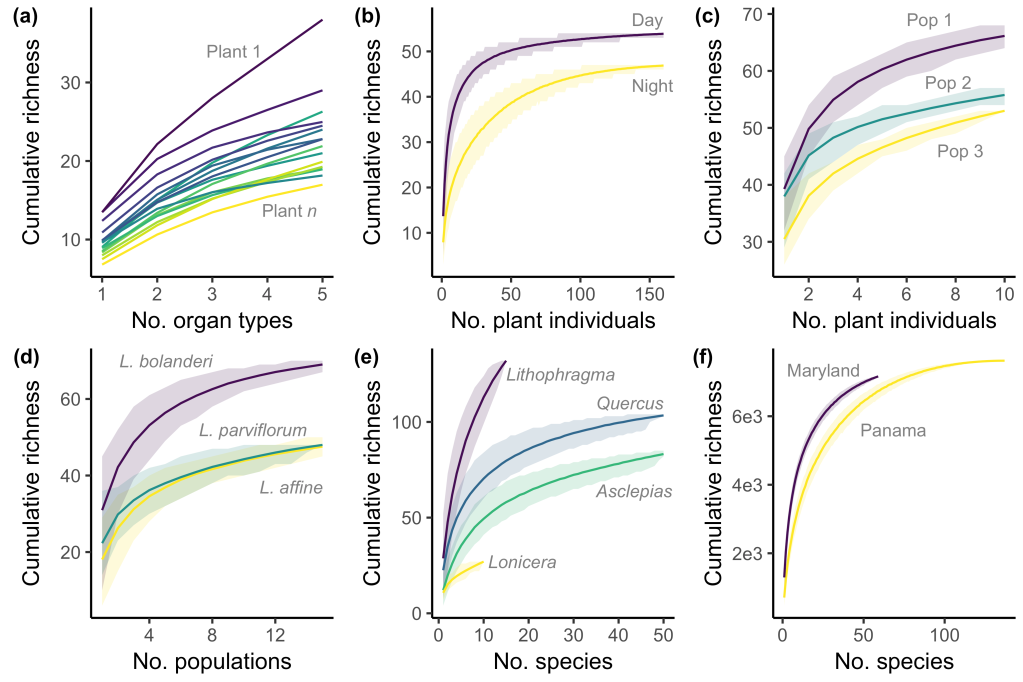
Using plant chemical diversity for sustainable insect management in agroecosystems
Intraspecific genetic diversity has been studied for decades as a way to recruit natural enemies and suppress pests in agroecosystems. However, recent work has shown that there is a great deal of variability in the success of cultivar mixtures at achieving these aims. Focusing on a suite of plant traits that influences plant-insect and predator-prey interactions, rather than overall genetic diversity, offers a promising approach to study effective plant mixtures. A wealth of literature supports the role of plant chemical traits as strongly influencing both predators, herbivores, and their interactions, but there is limited work on how chemical traits mediate the effects of plant diversity on these interactions. The Wetzel lab has been working on multiple projects that address questions related to the role of chemical diversity in agroecosystems, including incorporating chemical ecology into our understanding of plant neighborhood associational effects, the effects of chemical diversity within and among plants, the effects of chemical diversity on predator-prey interactions, and the role of spatial arrangement of cultivars on insect movement.
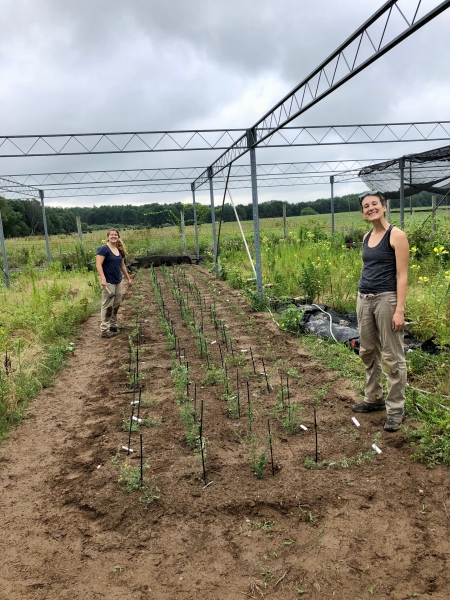
2. The temporal ecology of extreme climatic events
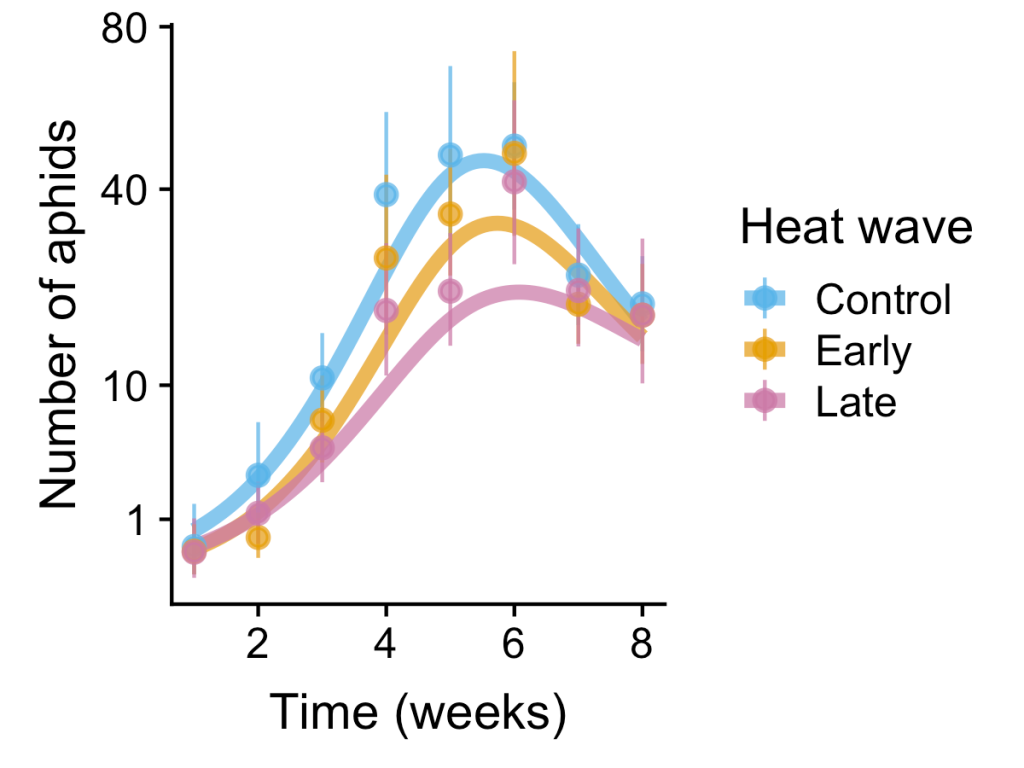
Climate change is increasing the frequency and intensity of extreme weather events, including heat waves, brief events with unusually high temperatures. Biologists have a good understanding of the short-term physiological responses of organisms to heat stress events, but we have a poor understanding of the long-term ecological consequences, limiting our ability to understand and predict ecology in an increasingly extreme climate. A key challenge is that heat waves are brief relative to organismal ontogeny and seasonal dynamics, which means that the precise phenological timing of a heat stress event may determine its ecological consequences. A major research direction in the lab is the temporal ecology of extreme climatic events. We are using open-top chambers and ceramic heaters to create experimental 4-day heat waves in the field on common milkweed (Asclepias syriaca) and its insect community, varying the timing of the heat waves relative to organismal phenology and ontogeny. Our results indicate that heat waves reduce milkweed defenses for up to sixty days after a heat wave, suggesting that brief heat events have lasting consequences. Moreover, the strength of this effect increases through milkweed ontogeny, suggesting that later heat wave events may have larger ecological consequences. Indeed, we have also found that later heat waves have greater negative effects on aphid population dynamics than earlier heat waves within the year of the heat wave—and in the following growing season. We paired our empirical heat wave experiments with a theoretical model of a general plant–herbivore interaction to help us generate hypotheses and general expectations for how the timing of an extreme event within a growing season might alter its ecological consequences. Just as with our empirical results, the timing of an extreme event in our model was hugely consequential. Moreover, our model, in further agreement with our field data, indicated that heat waves later in the growing season are likely to have longer-lasting transient ecological consequences. Our field experiments and models are enabling us to develop a new, temporally explicit ecology, focused on the phenology of extreme climate events. The results of this work will allow us to understand how short-term climate events scale up to influence ecosystems dynamics, thereby improving our ability to predict and respond to climate change.
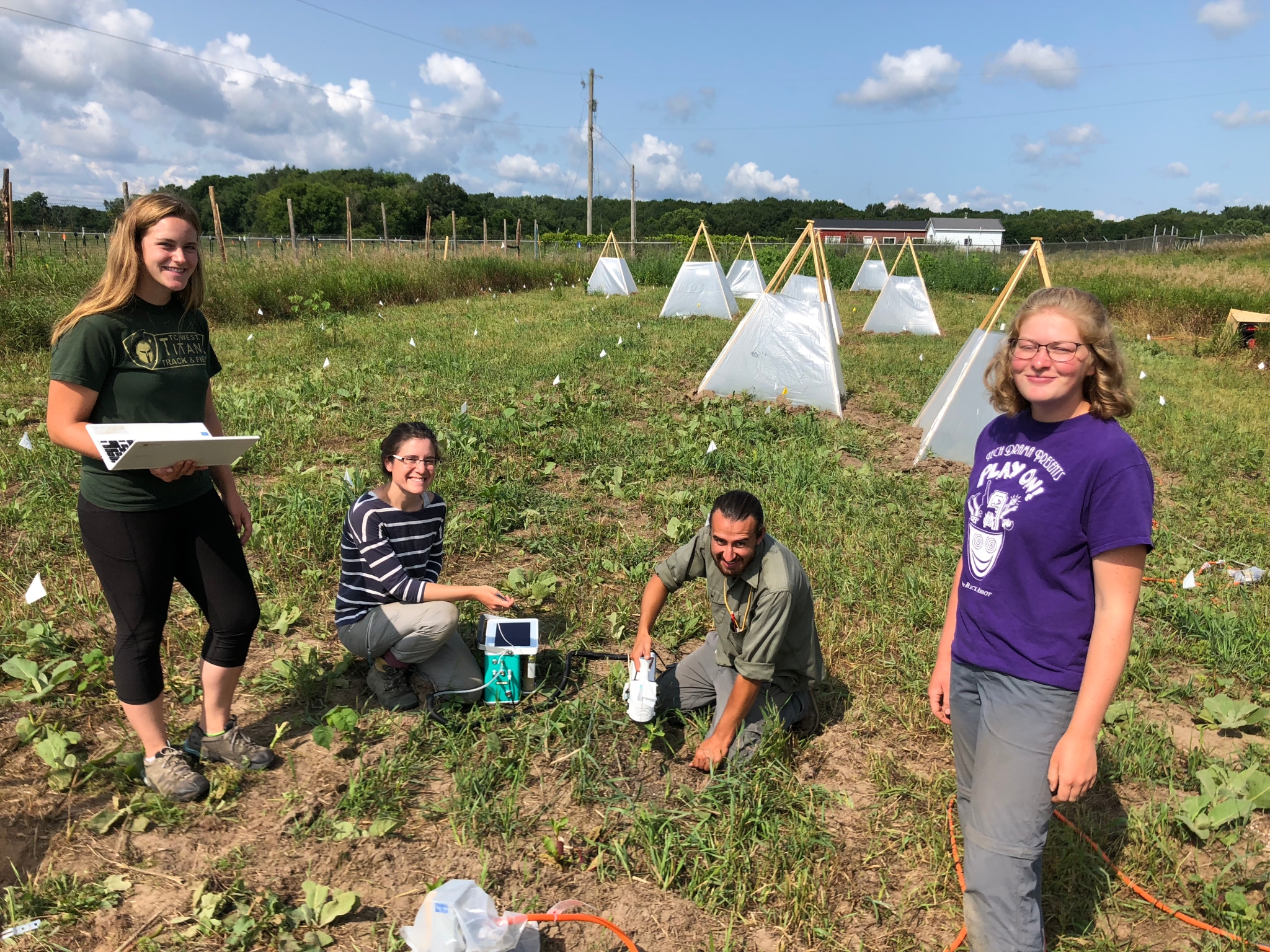
3. The macroecology of spatial heterogeneity in plant–herbivore interactions
A common observation in terrestrial ecosystems is high spatial heterogeneity in plant–herbivore interactions: most plants within a population with low densities of insect herbivores and low levels of herbivore damage, but a few plants within the same population with extremely high herbivore densities and herbivore damage. Theory from population ecology and disease ecology indicates that such high spatial heterogeneity, or inter-individual variability in interaction strength (akin to disease “super-spreaders”), has potentially huge consequences for how local interactions translate to ecological dynamics at higher scales. Moreover, the distribution of herbivory among plant genotypes within a population is also central to theories about the evolution of plant–herbivore interactions, including hypothesized mechanisms maintaining intraspecific variability in plant defense and tolerance of herbivory. Amazingly, despite the vital theoretical importance of spatial heterogeneity in plant–herbivore interactions and the many anecdotal observations of this natural history pattern, there has been no quantitative analysis of spatial heterogeneity in herbivory. The Wetzel Lab has recently started The Herbivory Variability Network (“HerbVar”), a global research network collecting standardized data on spatial and temporal heterogeneity in plant–herbivore interactions across plant species and ecosystems around the world. See the HerbVar website for more information.
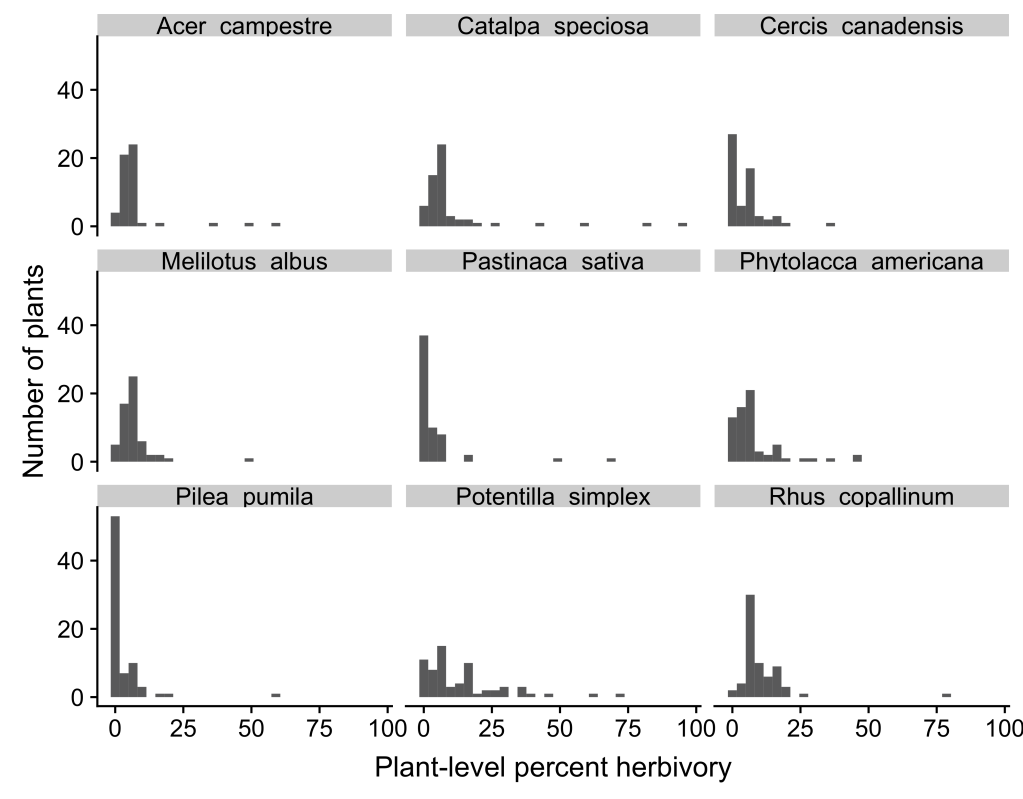
4. How do plants influence herbivore population dynamics?
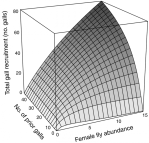
Density-dependent population dynamics—correlations between demographic rates and population density—is a central concept in ecology. Surprisingly, we are only beginning to learn how plants influence density-dependence in herbivore population dynamics and how this alters spatiotemporal patterns of herbivore abundance. We have addressed this issue with the sagebrush stem-galling fly (Eutreta diana). Like many species of herbivores that are specialized on just a few host-plant species, E. diana exhibits strikingly high variation in density among individuals of its host plant but low variation in density through time. Using observational data and field experiments, we have shown that this spatiotemporal abundance pattern can be attributed to density-dependent herbivore survival that varies in intensity among individual host-plants at fine spatial scales. Heterogeneity in density-dependence among plants made the population dynamics on the average plant unimportant relative to the population dynamics on the rare plants with weak density-dependence. This result is surprising because ecologists typically focus on population dynamics parameters at large spatiotemporal scales, but this work shows that spatial variation in the strength of density-dependence within populations can also influence abundance patterns. Moreover, spatial heterogeneity in the strength of plant-mediated density-dependence serves as a potentially general explanation for the temporally stable and spatially variable pattern of population dynamics exhibited by specialist insect herbivores. (Wetzel 2014, Wetzel & Strong 2015)
5. How does herbivore modification of host plants influence arthropod communities?
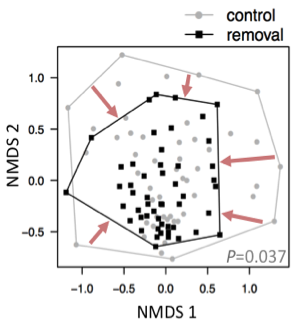
The focus of much of the work described above is on how plant traits influence herbivores, but herbivores can also dramatically alter the traits of the plants they attack. A major question in insect ecology how does herbivore modification of host plant traits influence arthropod community patterns? We have addressed this question using the California gall wasp (Andricus quercuscalifornicus) and its host, valley oak (Quercus lobata). These gall wasps modify the phenotype of oak trees by inducing large galls (circa 6-cm diameter) that remain attached to branches for years after the gall wasps emerge and depart, and there is high variation in levels of gall wasp attack among trees within a population. We showed that these galls are colonized by a high density of jumping spiders (Salticidae), voracious predators of other arthropods. We experimentally removed galls from trees and showed that trees with more galls have more spiders and several times lower herbivore species richness and density. Moreover, trees with galls were more likely to support unusual assemblages of arthropods—communities that were very different from the average arthropod community. In other words, galls increased arthropod community beta-diversity at the scale of entire populations of oak trees. Our results showed that heterogeneity in levels of attack by gall wasps led to heterogeneity in the abundance of gall habitat structures, which in turn led to heterogeneity in spider abundances and herbivore abundance and richness, and higher arthropod beta-diversity. This work demonstrates that the influence of plant traits on higher trophic levels depends not just on intrinsic trait values but also on how herbivores shape those plant traits. (Wetzel et al. 2016)
